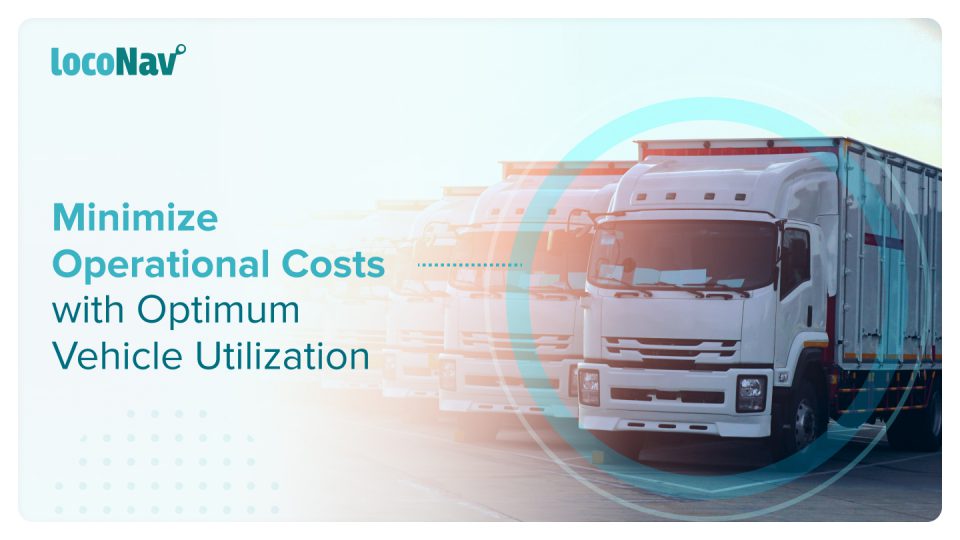

In an ideal world, your demand and capacity perfectly match. But in the kind of economic environment that businesses exist in, maintaining this balance is a difficult task. This ratio is referred to as vehicle utilization. In simple words, vehicle utilization is the ratio of a vehicle’s demand to its threshold. Similarly, fleet utilization is the ratio of fleet demand to fleet capacity. Since both capacity and demand are unstable, the approach to managing them keeps changing as well.
Fleet vehicle utilization is a useful metric for fleet managers who are looking to limit operational costs and increase efficiency. Although this parameter is not evaluated frequently, it can be the perfect way for managers to run their fleet at a low cost while enhancing efficiency.
Keeping tabs on your fleet usage can help you calculate the return on investment of your fleet and highlight the specific areas where you need to make changes. In this blog, we have highlighted the basic information you may need to utilize to monitor fleet utilization and gain practical information on optimizing fleet capacity.
How do you determine a vehicle’s full utilization?
Vehicle utilization can be evaluated in a number of ways. The most common measures of vehicle capacity utilization are:
- Mileage (Kilometres/Operational Days)
- Hours of Operation
- No. of Vehicles Operated in a Day/No. Of Vehicles Available
Utilization typically fluctuates across distinct intervals throughout the day (i.e. between peak and off-peak periods), days of the week, and seasons. During peak hours, vehicle utilization should be between 95 and 100 percent. Poor usage (as opposed to poor availability) may be caused by an excess of cars, inadequate scheduling, a shortfall of driving and/or conducting personnel, or road or weather conditions that prevent some services from operating.
A high rate of vehicle utilization may not always imply a high standard of performance or profitability. A fleet can be well utilized, but only for services that have minimal demand and hence lose money. Furthermore, some vehicles may be employed for extremely short times during only one of the peaks, significantly limiting their revenue-earning capabilities.
How can demand and capacity be balanced for optimal vehicle utilization?
Balancing demand and capacity for optimum vehicle utilization management is a tough task. But when done successfully it ensures that you make the best out of your available resources.
Some techniques to achieve this balance are:
- The first thing you need to do is to ensure that your current fleet is being optimally used. Both under and over usage are bad for vehicle utilization management.
- If the majority of your vehicles are being overutilized as a result of your growing business, you will need to increase your vehicle purchasing budget in the future to meet fleet demand.
- Predicting replacement demand is critical for estimating precise future procurement funds required to purchase new vehicles when the time comes.
What factors influence the rate of vehicle utilization?
A metric as fickle as vehicle utilization is influenced by several factors. We will now briefly discuss those factors:
- Unreliable Delivery Schedule
When schedules are uncertain, transportation managers are naturally hesitant to organize backhauls or the more complicated collection and delivery routes that can yield higher levels of load consolidation. Companies understandably prioritize outward distribution to consumers because they are concerned that a vehicle employed in backhauling would not be able to reposition in time to handle the following delivery.
- Fluctuating Demand
One of the primary causes of vehicle capacity underutilization is the variability of demand throughout daily, weekly, monthly, and seasonal cycles.
- Poor Inter-Department Coordination
Purchasing departments frequently treat inward delivery as the supplier’s responsibility and fail to examine potential synergies with vendor organizations’ transport operations with logistics managers. Sales personnel, on the other hand, have a history of establishing delivery obligations to customers that require hauling part-loads on short notice.
- Vehicle Size Restriction
Some cargoes surpass the weight limit before taking up all of the available space in the vehicle. As a result, the vehicle is underutilized in terms of volume or weight, which results in subpar motor vehicle utilization.
How does Fleet Management Technology Improve Vehicle Utilization?
Aside from labor and fleet resources, fleet management is critical to boosting fleet utilization. Here are some of the ways fleet management technology can improve vehicle utilization:
- Solutions such as LocoNav’s fleet management software help optimize routes for your fleet so the maximum amount of work can be done with the lowest possible number of trips. This will help in preventing the over-utilization of your vehicles.
- Fleet management technologies such as LocoNav are capable of predicting future demand using AI algorithms. This intimates fleet owners to use the current fleet and account for new fleet procurement.
- Fleet tracking software gathers information on mileage, fuel usage, idling, and engine hours. This aids in proactive fleet planning and management. The information also assists fleet managers in identifying and categorizing vehicle problems.
- Real-time fleet tracking and route planning tools lower the number of miles driven. Furthermore, these technologies cut fleet maintenance costs and boost fleet vehicle utilization.